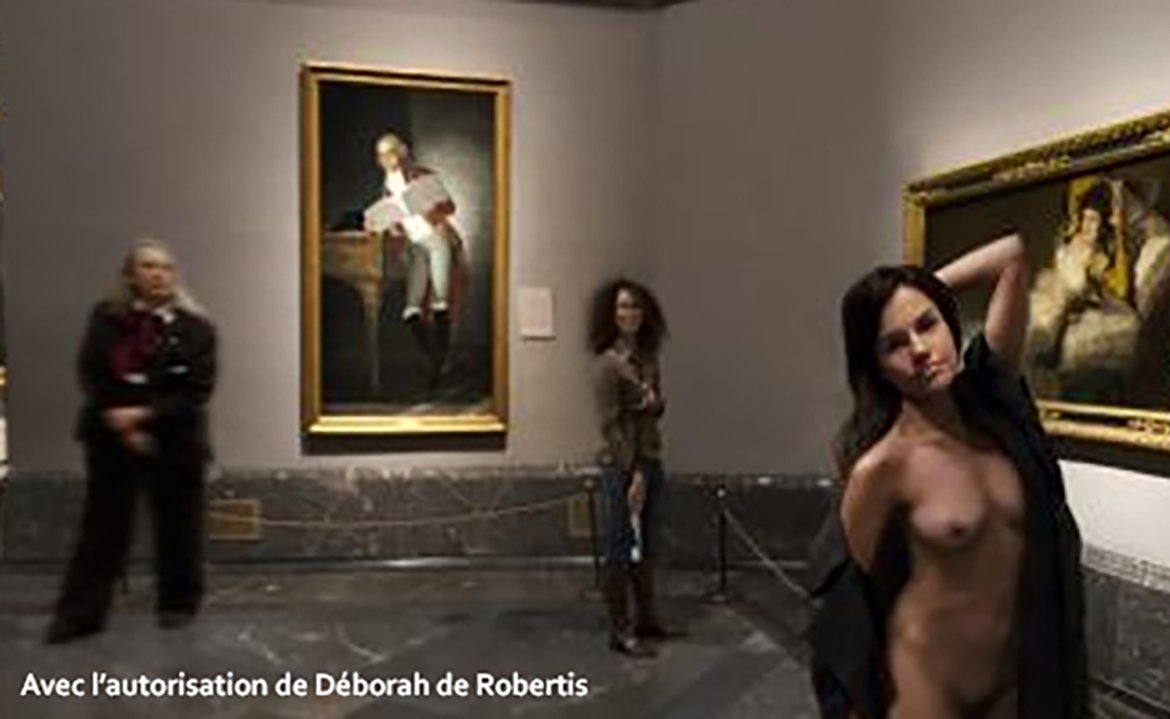My Way 19 – Deploying the Gaze, Outside-the-Frame!

Déborah de Robertis remarks to the security officers of the Musée d’Orsay who came to cover her up: “if you hide me, I will get naked”[1]. What really had they come to cover-up? Not her body, which in the end she herself had clothed, but rather her speech, her want-to-say. It is through the outside-the-frame character of her performance that Déborah de Robertis offers a visualization which strikes at the Other, causing a vacillation right down to its very representative offices.
In this issue of My Way Bruno de Halleux, in his text Producing strength through weakness, introduces us to Ingrid von Wantoch Rekowski, and shows how the actor “is more present by her body than with her words”. It is “inadequacy” rather than prowess which is aimed at, in a certain manner of “adapting her weakness”.
Caroline Doucet, in her text A Case of Feminine Hysteria in the Age of the Parlêtre, offers testimony of her fantasy of “being beaten by life”, which up until the “lifting of the fundamental symptom” bringing her “towards the desire of the analyst”, had led her to “neither see, nor listen”.
Marie-Paz Rodriguez Dieguez shows us how leaving the frame can also involve “going beyond the desire of the Other”.
In his contribution, Mathieu Cornillie recounts the story of a genuinely contingent encounter, which happened in the public eye between “mainstream” artist Damien Magnette and “outsider” artists – autistic or disabled – Rudy Callant, Johan Geenens and Linh Pham.
Marc Segers highlights a fantasy “in the artistic field”, the one of artist Chris Bruden, for whom “limits are often in the eye of the viewer”.
Jacques-Alain Miller remarks: “art begins at the point where that which cannot be said, can be shown. It can be shown and even exhibited”[2].
This issue of my way places an accent outside-the-frame, and might just say to you: open your eyes!
Translated by Raphael Montague
[1] de Robertis, Déborah. Olympia. https://vimeo.com/153984661, 2016. (Edito-Photo)
[2] Miller, Jacques-Alain. Ce qui fait insigne. Lesson of the 6th May 1987.


